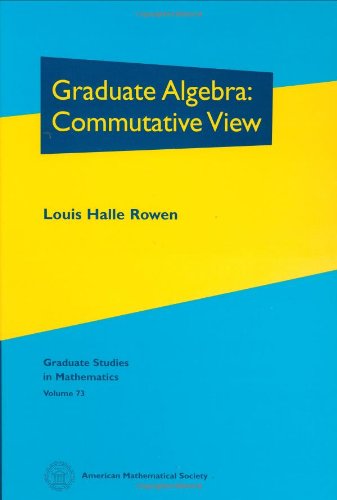

Most ebook files are in PDF format, so you can easily read them using various software such as Foxit Reader or directly on the Google Chrome browser.
Some ebook files are released by publishers in other formats such as .awz, .mobi, .epub, .fb2, etc. You may need to install specific software to read these formats on mobile/PC, such as Calibre.
Please read the tutorial at this link: https://ebookbell.com/faq
We offer FREE conversion to the popular formats you request; however, this may take some time. Therefore, right after payment, please email us, and we will try to provide the service as quickly as possible.
For some exceptional file formats or broken links (if any), please refrain from opening any disputes. Instead, email us first, and we will try to assist within a maximum of 6 hours.
EbookBell Team

4.3
68 reviewsThis book is an expanded text for a graduate course in commutative algebra, focusing on the algebraic underpinnings of algebraic geometry and of number theory. Accordingly, the theory of affine algebras is featured, treated both directly and via the theory of Noetherian and Artinian modules, and the theory of graded algebras is included to provide the foundation for projective varieties.
Major topics include the theory of modules over a principal ideal domain, and its applications to matrix theory (including the Jordan decomposition), the Galois theory of field extensions, transcendence degree, the prime spectrum of an algebra, localization, and the classical theory of Noetherian and Artinian rings. Later chapters include some algebraic theory of elliptic curves (featuring the Mordell-Weil theorem) and valuation theory, including local fields.
One feature of the book is an extension of the text through a series of appendices. This permits the inclusion of more advanced material, such as transcendental field extensions, the discriminant and resultant, the theory of Dedekind domains, and basic theorems of rings of algebraic integers. An extended appendix on derivations includes the Jacobian conjecture and Makar-Limanov's theory of locally nilpotent derivations. Gröbner bases can be found in another appendix.
Exercises provide a further extension of the text. The book can be used both as a textbook and as a reference source.